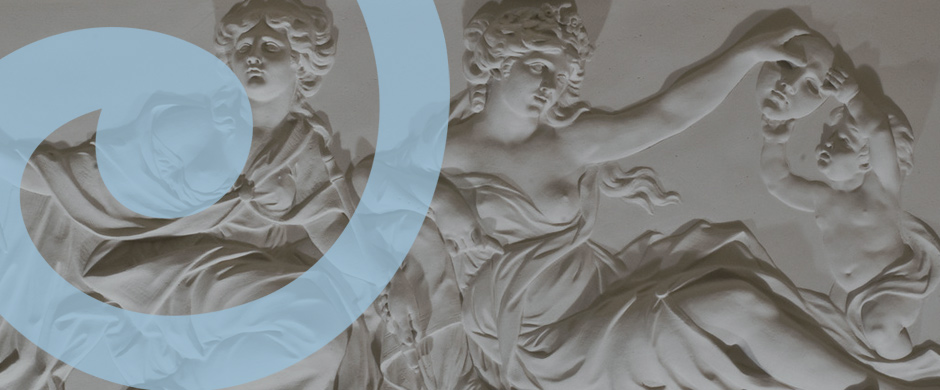 | IN DISCUSSION
| IN DISCUSSION

The Great Hall Exhibition Essays
Students from Professor Edward Sullivan's course Curatorial Practice - Curatorial Study: A Crossdisciplinary Approach reviewed Graphic Objects: Elaine Lustig Cohen's Sculptural Works.
By Makenzi Fricker
October 30, 2018
Graphic Objects: Elaine Lustig Cohen’s Sculptural Works presents five sculptures by the artist from October 19, 2018, to February 24, 2019. Cohen’s work reflects her background as a graphic designer; angular and geometric, her art emphasizes the sometimes arbitrary relationship between form and color. Three warm-hued panels painted with deep ochre, vermilion, and coral display three wall-based reliefs. The reliefs are assemblages of painted wood that, despite their layers of pigment, embrace their materiality. The wood is splintered, abraded, and cracked in many places, and peppered with errant nails, alluding to its possible past life in a more utilitarian capacity. Now seen in a fine art context, the wood is fitted together to form collages of shapes and colors. The shapes, although geometric, have a whimsical quality. Many of them are familiar: triangles, thin rectangles, half-circles. Others are more curvilinear. While nearly all of the works utilize solid, flat planes of pigment, the object on the center panel is the only one whose pigment is distressed. It has cracked and flaked away to reveal the wooden substrate underneath.
Two cube sculptures rest on white pedestals between the panels, forming a balanced, harmonious presentation of five artworks. The cubes rely less on the protruding elements of the wall reliefs, and instead use hard-edge painting of color and line to define their form. The cubes use heavily saturated yet muted tones of blue, red, white, black, orange, and gray to make them appear assembled. Cohen’s inspiration from twentieth century high Modernism is evident in the use of color and shape, evocative of Cubism, De Stijl, and Arts and Crafts. Surrounded by the pink and tan marble, chandeliers, and gilded balustrade of the Duke House, Cohen’s work appears incongruous, and intentionally so--the forms and colors of the work activate a space heavily reliant on Neoclassical tradition.
Continue reading student essays


